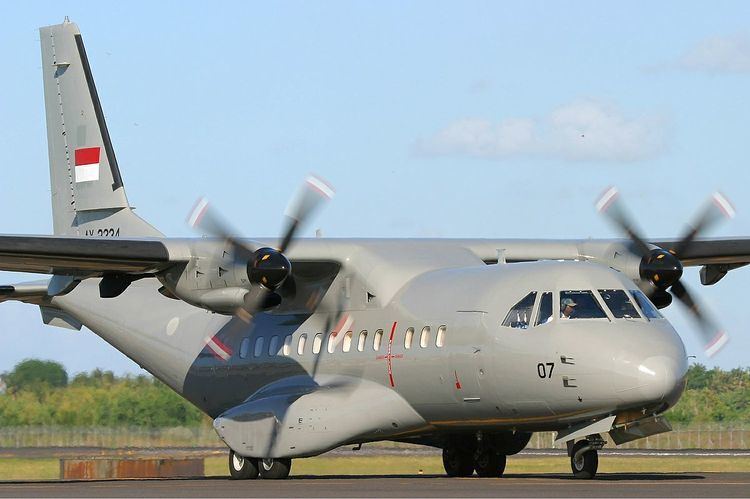 | ||
Similarly to many other developing countries, Indonesia is not considered as one of the leading countries in science and technology developments. However, throughout its history, there have been notable scientific and technological developments and achievements contributed by Indonesians. Despite being a developing country, Indonesia is one of a handful nations that have developed their own aerospace technology.
Contents
- History
- Construction technology
- Aerospace and transportation
- Information and communication technology
- Robotics
- Notable people
- References
Currently, the republic's Ministry of Research and Technology is the official body in charge of science and technology development in the nation. The government institution dedicated to science and research in the country is Indonesian Institute of Sciences (Indonesian: Lembaga Ilmu Pengetahuan Indonesia or LIPI). It consists of 47 research centers in fields ranging from social to natural sciences. In 2010, the Indonesian government allocated Rp 1.9 trillion (approximately US$205 million) or less than 1 percent of the total state expenditure for research and development.
History
Living in an agrarian and maritime culture, the people of the Indonesian archipelago have become well-known in some traditional technologies, particularly in agriculture and marine. In agriculture for instance, the people in Indonesia and many other Southeast Asian countries, are famous for paddy cultivation and techniques such as terracing. Local systems of complex irrigation and water management have been developed in the archipelagos. An exceptional example is Subak, the irrigation system of Bali.
The Bugis and Makassar people from the island of Sulawesi in eastern Indonesia are also well-known for their shipbuilding technology. They are renowned for making a wooden sailing vessel called pinisi boat.
In architecture, native Indonesians have developed their own vernacular architecture. Some examples of architecturally significant Indonesian buildings are Rumah Gadang of Minangkabau, Tongkonan of Toraja, and Omo sebua of Nias. The Omo Sebua is noted for its sturdy yet flexible design which allows it to resist earthquake.
By the 8th century, the Javanese kingdom of Medang Mataram kingdom developed an advanced stone mason architectural technology in candi (temple) building. This includes the magnificent Borobudur, Prambanan and many other temples. Architectural technique that has been developed includes knobs, indentations and dovetails that are used to form joints between stones, and binds them without mortar. Other significant to architectural advancements include: the roof, niches, and arched gateways constructed in the corbelling method.
Indonesians have made various advances in food technology. Living in a tropical climate teeming with various microbes has allowed for much advancement in this area. Indonesians have developed traditional knowledge in fermentation techniques, which resulted in the development of fermented food such as tempeh, oncom, tapai, and also beverages like brem and tuak. Tempeh is made through natural culturing and a controlled fermentation process, which employs the fungi Rhizopus oligosporus or Rhizopus oryzae, The fungi binds soybeans into a cake form. It has higher content of protein, dietary fiber, and vitamins.
Construction technology
There are some notable technological developments made by natives in modern Indonesia (post independence). In the 1980s an Indonesian engineer, Tjokorda Raka Sukawati, invented a road construction technique called Sosrobahu. It was popularized afterward and has since been widely used by many countries. The Sosrobahu technique allows long stretches of flyovers to be constructed above existing main roads with minimum disruptions to the heavy traffic. It involves the construction of horizontal supports for the highway beside the existing road, which is then lifted and turned at a 90 degree angle before being placed on the top of the vertical supports. This forms the flyover pylons. The technology was exported to the Philippines, Malaysia, Thailand and Singapore. In 1995, a patent was granted to Indonesia.
Aerospace and transportation
Indonesia has a long history in developing military and small commuter aircraft. It is the only country in Southeast Asia to produce and develop its own aircraft, also producing aircraft components for Boeing and Airbus, with its state-owned aircraft company (founded in 1976), the Indonesian Aerospace (Indonesian: PT. Dirgantara Indonesia), which, with EADS CASA of Spain developed the CN-235 aircraft, which has been exported to many countries. Bacharuddin Jusuf Habibie, a former Indonesian president, played an important role in this achievement. While active as a professor in Germany, Habibie conducted many research assignments, producing theories on thermodynamics, construction, and aerodynamics, known as the Habibie Factor, Habibie Theorem, and Habibie Method respectively. Indonesia also hopes to manufacture the South Korea KAI KF-X fighter. The latest development is N-219, a twin-engine 19-seater commuter airplane.
Wiweko Soepono, a former Garuda Indonesia director, is also known as inventor of the modern two-man cockpit design (Forward Facing Crew Cockpit/FFCC) for Garuda Indonesia Airbus A300 aircraft.
Furthermore, Indonesia has a well established railway industry, with its state-owned train manufacturing company, the Indonesian Railway Industry (Indonesian: PT. Industri Kereta Api), located in Madiun, East Java. Since 1982, the company has been producing passenger train wagons, freight wagons and other railway technologies which it has exported to many countries such as Malaysia and Bangladesh.
Information and communication technology
Indonesia was one of few countries during the 1970s to own their own communication satellite. Since 1976, a series of satellites named Palapa were built and launched in the United States for Indonesia's state-owned telecommunication company, Indosat.
In Internet technology, an Indonesian information technology scientist, Onno W. Purbo developed RTRW-net, a community-based internet infrastructure which provides affordable Internet access to people in rural areas.
Robotics
Indonesian students also have a good record of winning many international competitions in science and technology. In 2010, the robotics team from Computer University of Indonesia successfully defended their title by winning the gold medal at the Robogames in San Francisco, United States after they won the same award in 2009. Two years earlier, in 2008, another robotics team from the Tenth of November Institute of Technology won the third place in the robotics contest hosted by the Asia Pacific Broadcast Union (ABU) Robocon 2008 in Pune, India.
